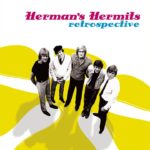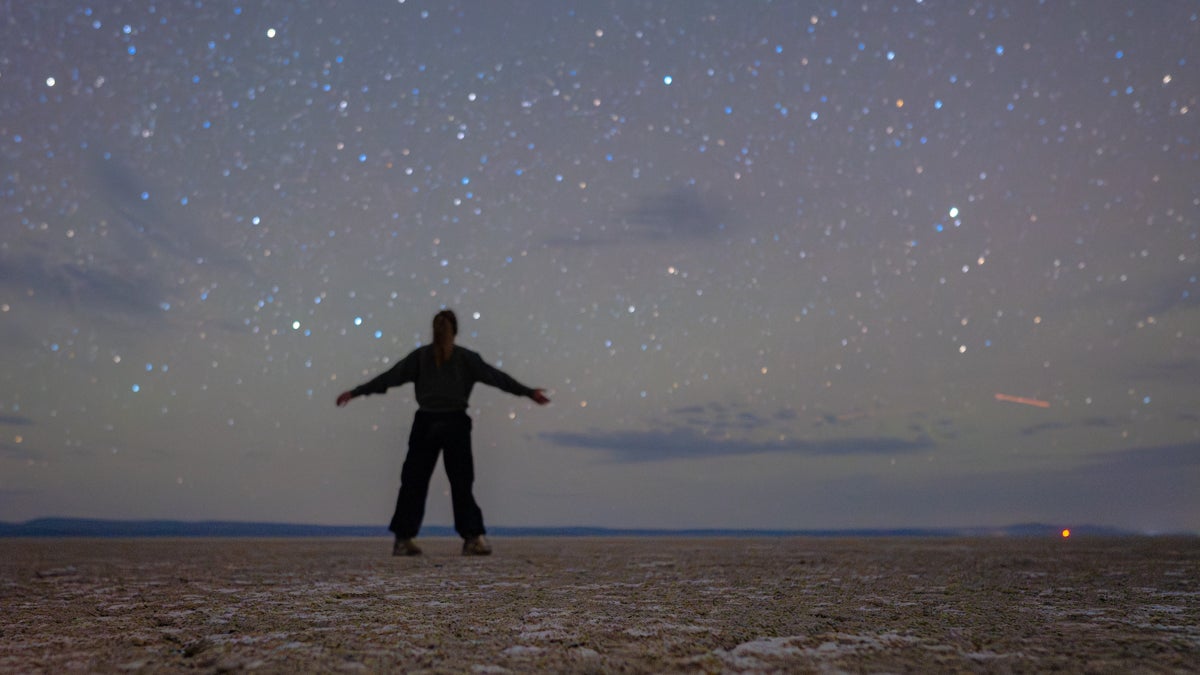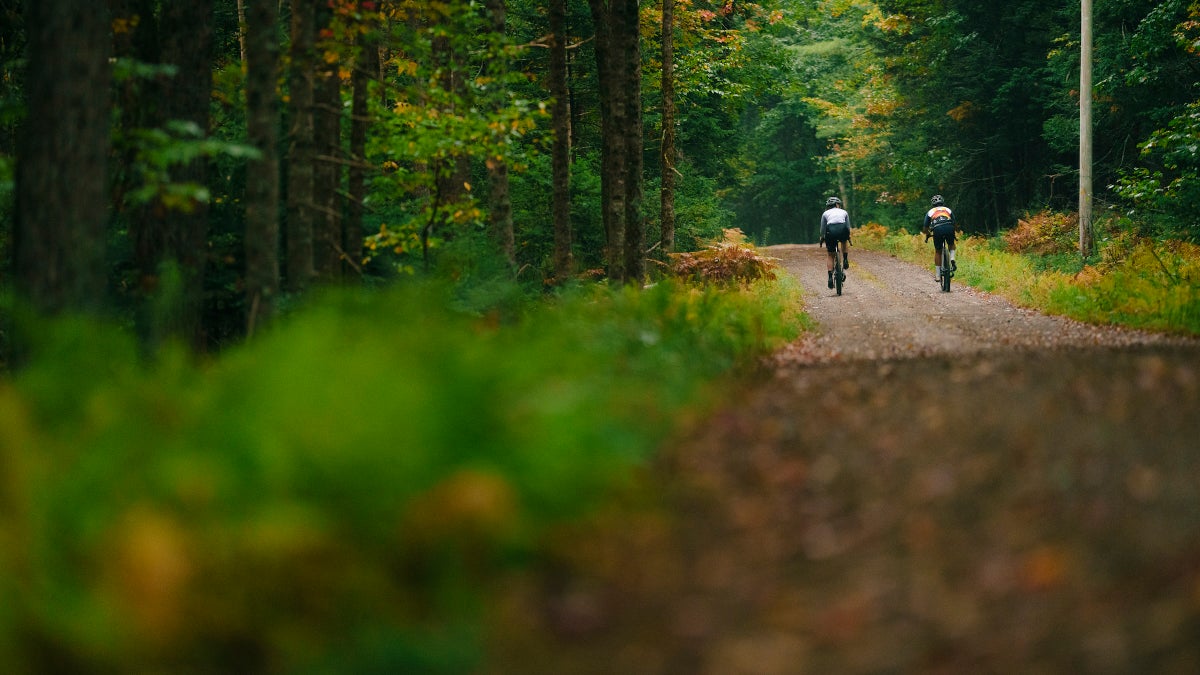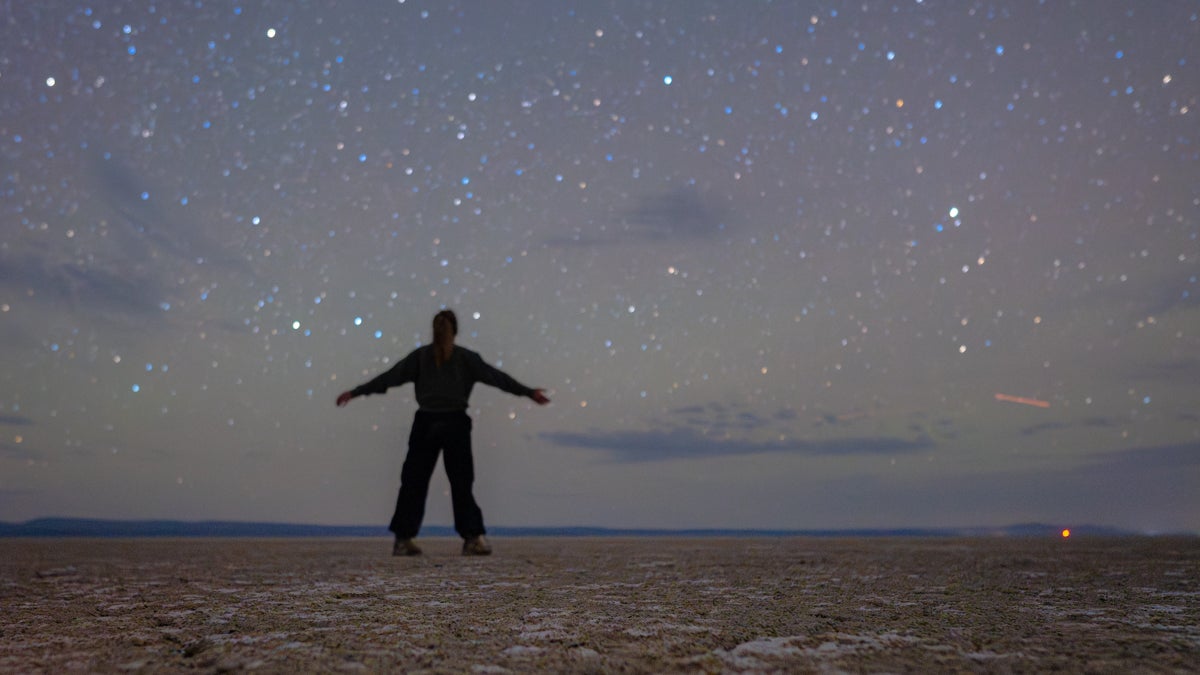
Usually, cameras see stars better than the naked eye, but on the hexagon-cracked flats of Summer Lake, my night vision gave my Sony a run for its money.
In September, I visited this stretch of south-central Oregon to photograph the twilight backdrop for a new book I’m working on about stargazing. I knew the remote area, on the western fringes of the Oregon Outback, was a must-see. It’s part of the largest contiguous dark-sky zone in the lower 48 states, not to mention the world’s largest dark-sky sanctuary—the DarkSky Association’s loftiest certification.
“A sanctuary is the equivalent of a wilderness area versus a national park,” Bob Hackett, Travel Southern Oregon director, told me. Unlike a national park with gift stores, a visitor center, and designated viewpoints, the region is more like a wilderness area in that it has minimal development and a small population. “That’s why it’s so dark.”
This makes for the perfect stargazing recipe—not just via a camera or telescope, but with the naked eye. While my camera snapped away on interval mode, I stepped back to soak it all in. My night vision improved with each minute, and I watched slack-jawed as the heavens became a real-life planetarium. Galaxies, nebulae, shooting stars, and the Milky Way’s luminous core shimmered all around me, while hundreds of white pinpricks sparkled overhead.
I enjoyed this pristine night scene—a rarity in today’s artificially illuminated world—with another coveted travel luxury: seclusion. For hours, my travel buddy and I admired the starry splendor with no other sky-watchers in sight. Here’s how you can do the same.
Inside the World’s Largest Dark Sky Sanctuary
The Oregon Outback International Dark Sky Sanctuary spans 2.5 million acres of Lake County, with sagebrush-dotted high desert and rocky peaks on the northern stretch of the western U.S.’s Basin and Range Province. The sanctuary itself is a small part of the larger Oregon Outback, the state’s sprawling and rugged southeast quarter—a longtime favorite among bikepackers.
The sanctuary includes a mix of small communities like Adel, Plush, and Summer Lake, as well as public lands, the Hart Mountain National Antelope Refuge, and several wilderness study areas. The entire county’s population totals around 7,000, says Hackett. “That’s a density five times less than Mongolia.” This small footprint, paired with the area’s seclusion, helped the Oregon Outback achieve nonprofit DarkSky International’s highest echelon of nightscape designations, which range from urban night-sky places to the exceptionally pristine and remote sanctuaries.
Agencies like the Bureau of Land Management, U.S. Fish and Wildlife Service, and the Oregon Parks and Recreation Department collaborated on this multi-year project. They shared several overarching goals. For starters: astrotourism. Around 90 percent of the sanctuary lands are public, and Travel Southern Oregon hopes the record-breaking designation will generate opportunities for local tourism and tourism-adjacent businesses.
Dark-sky sanctuary protections also safeguard biodiversity, particularly for birds, which rely on natural night for safe movement. The sanctuary lies on the Pacific Flyway. It sees millions of migratory birds in the spring and fall. Summer Lake, where I overnighted, is particularly lauded among birders, with migratory species of waterfowl, including geese, swans, and ducks, as well as sandhill cranes.
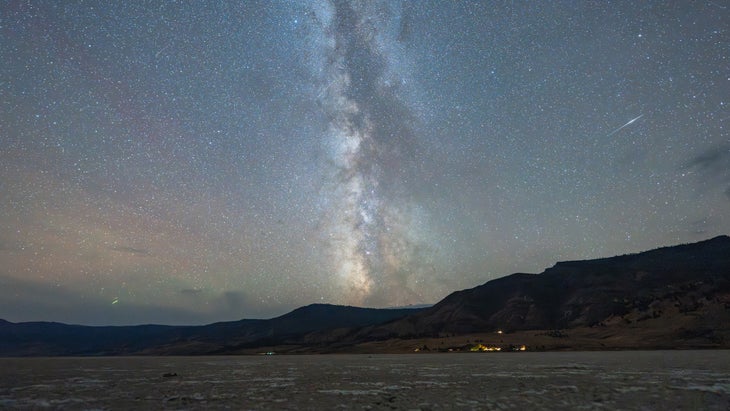
Where to Stargaze in the Oregon Outback Dark Sky Sanctuary
While the sanctuary encompasses millions of acres—with plans to vastly expand its boundaries in the coming years—some areas are more reachable than others, especially at night. Choose a home base with easy access to the pristine night skies, whether it’s a cabin, lodge, or campground. Here are two of the best options.
Summer Lake
I chose Summer Lake, roughly 100 miles south of Bend, as my Oregon Outback basecamp. It’s a quiet area with a handful of nearby communities and local restaurants, including one of the oldest bars in Oregon, the Pioneer Saloon, in Paisley.
You’ll find several accommodations in the region. The Lodge at Summer Lake overlooks the Summer Lake State Wildlife Area, an area known for avian visitors.
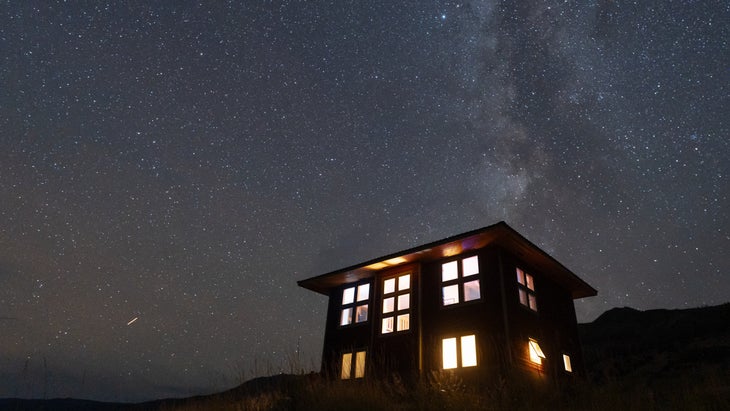
I opted for this astronomy-focused Airbnb. There’s a hot tub for sky-watching, a Celestron telescope in the living room, and direct access to the lakebed. Its edges stay dry and accessible for much of the year, but the interior water levels fluctuate by the season. For an extra cozy evening of stargazing, stay at Summer Lake Hot Springs, a 145-acre resort with guest houses, cabins, campgrounds, and RV hookups and natural hot springs onsite.
While you’re here, don’t miss Summer Lake’s stretch of the 800-mile Oregon Desert Trail, which winds through much of the Outback.
Hart Mountain National Antelope Refuge
Hart Mountain National Antelope Refuge, located 120 miles southeast of Summer Lake, gets even more remote. It’s among the last strongholds for the pronghorn, North America’s fastest hoofed animal. The refuge also protects ancient rock paintings dating back millennia; hikers can spot it on the trail around Petroglyph Lake. Keep an eye out for wildlife, like pronghorns, while you’re trekking.
Three refuge campgrounds stay open year-round; they’re free and available on a first-come, first-serve basis, with access to not only impeccable nightscapes but one of the region’s greatest allures: natural hot springs.

When Is the Best Time to Stargaze in Southern Oregon?
For the brightest stars, plan your trip around a new moon, including the week leading up to and after it. The weather here can be unpredictable; I had a perfectly clear night, then full-on overcast within 48 hours. Give yourself at least two or three nights to improve your stargazing odds.
Spring, summer, and fall are the best months for birding and sky-watching; these are also prime times to spot the core of the Milky Way. The sanctuary’s technically open in the winter, but be prepared for snow, especially in higher-elevation areas like Hart Mountain. “Winter is best for staying low,” suggests Hackett.
Know Before You Go
Remoteness makes the Oregon Outback ideal for stargazing, but it also adds a layer of challenge. The main communities, such as Paisley or Lakeview, have a few shops and restaurants. Stock up on any necessary goods before you head this way, and fill up on gas well before you reach empty.
And be ready for gravel roads with 4WD, especially in snowy months “You need the right equipment, and since there’s a lack of resources, you need to come prepared,” says Hackett.
If you’d rather sky-watch with a guide, check out Bend-based operator Wanderlust Tours. The outfitter runs stargazing trips in Fort Rock, just north of the sanctuary, with dates available from late 2025 into 2026.
Just like tours, transit options remain limited; Redmond Municipal Airport (RDM) near Bend is the closest commercial airport, and a rental car is your best option. Consider bookending your Outback visit with a stay 20 minutes south of the airport at Sunriver Resort. The 3,300-acre property offers rental bikes, onsite horses, and telescopes and a planetarium at the onsite and NASA-sponsored Sunriver Observatory.
The post The World’s Largest Dark Sky Sanctuary Is Closer than You Think appeared first on Outside Online.






